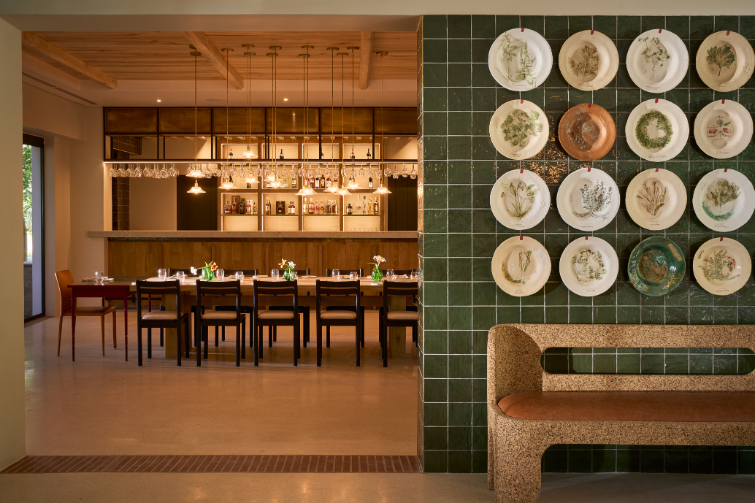The 2025 Trophy Wine Show is a highlight of the annual awards calendar. This year, media and industry once again had a peek behind the scenes at the feedback session with the international panel of judges, providing valuable insight on how South African wines perform against global benchmarks.
This year, the judges on The Trophy Wine Show panel included industry veteran Tom Carson (Yabby Lake, Australia), renowned French wine critic Michel Bettane, and Tamlyn Currin, sustainability editor and staff writer for JancisRobinson.com in the UK. Tom and Michel have both served on previous Trophy Wine Show panels.
The South African panel comprised Heidi Duminy CWM, Christian Eedes, Eben February, Malu Lambert, Mandla Patson Mathonsi, James Pietersen and JD Pretorius.

The Trophy Wine Show judges’ briefing session in Paarl.
From her tastings of Chenin and Chardonnay entries, Tamlyn highlighted South Africa’s firm grip on a broad spectrum of styles, from fresh and light to rich, oaky styles. Sauvignon Blanc also received high praise. “There’s nuance, elegance, balance,” she says. “You have something very exciting here. Let’s focus on the vineyard and focus on the purity of the fruit.”
Her message was that winemakers need to stop comparing wines with their French counterparts. “You make South African wine,” she said. “Embrace your climate, your soils, your fruit, and express your national personality. You have a lovely feet-on-the-ground openness that I can taste in the wines.”
Pick for balance
Tom Carson provides an Australian’s perspective on local Shiraz, which he says have improved perceptibly over the past decade or two. He was struck by the vibrancy and intensity of South African Shiraz, especially a new style of medium to slightly full-bodied wines similar to some of the cool-climate Shiraz wines in Australia. “I saw much more purity, finesse, and elegance in the wines across the board, although some of the reds have clearly been hanging on the vines too long and are not appealing to anyone,” he says. “Pick them a bit earlier. People expect balance and varietal correctness.”
“When you judge a varietal class, you’re looking for varietal character with complexity on top of that,” Tom says. “In blended classes, you want the best of each variety to contribute to it. But if you don’t pick the variety when it’s expressing its true nature, you’re not achieving the best result for the wine. Freshness doesn’t mean early picking; it means picking at perfect ripeness when flavour, phenolics, sugar and acid are in balance.”
Tom also mentioned there’s some room for improvement on Chardonnay, noting a lack of daring and experimentation. “There’s a place for more tightly coiled and complex wines, but the wines are still playing it safe,” he says. “You can do more with Chardonnay. Work on some cooler sites, on the phenolics, the use of oak and wild ferments. The fruit’s there, but the winemaking needs to be bolder. Shiraz has come a long way; I think Chardonnay can do the same.”
The varietal characteristics of Pinotage give it a uniquely South African story to tell. “Pinotage has a distinct tannin structure from its peers, combined with the fruit-forward character of its parents Pinot Noir and Cinsault,” says James Pietersen. “The variety is crucial to the South African story. The better we get at producing the wine, talking about it and understanding what to do with it, the better for all of us.”
“It’s crucial that a winemaker has an aesthetic vision of what he wants to make,” he adds. “The winemaker have to have a clear view of what they want the consumer to experience. That experience has to go with emotion, language, and life. Otherwise, we’re just making beverages and getting lost in the competition.”
Civilised discussion
As food styles and consumer preferences are constantly evolving, Michel Bettane believes it’s important to keep up with the times. For him, it underscores the role of education – not for pedantic reasons, but because knowledge and experience only comes with exposure.
“I don’t believe you have to learn about wine to appreciate wine, but it certainly helps, and it helps to be introduced to it,” adds Heidi Duminy. “It’s not something you discover just by chance; you have to work on it. And not just with new consumers; in South Africa, there’s a market that’s interested, curious, and really wants to elevate their knowledge. Everyone should be able to learn on their own terms. It’s not a case of wine snobbery and elitism, because wine is where you are; you just need a place where you can learn more if you’re curious.”
Michel emphasised the need to produce wines that reflect the local terroir. “Good wines don’t belong to nations; they belong to humanity. But first, they belong to the soil, the place, the light, the weather, the microclimate… and to the dreams of the people who want to make wines in these places. We can have endless discussions about style, oak, ripeness, etc. but what’s important is what the owner or winemaker dreams of making.”
According to Michel, the Trophy Wine Show is one of the few competitions that encourage judges to interact and share their preferences with one another. Second-time judge Eben February agreed. “The international judges bring a lot of experience and provide valid feedback. Even though they don’t always like the styles we enjoy, there’s much to learn from discussing and debating the different tastes.”
The goal of competitions such as the Trophy Wine Show is to stimulate the same kind of debate and thought among winemakers. As James says, the industry needs aesthetic direction. “We need winemakers and viticulturists who understand where they want to go. Methodology is purely part of the recipe of trying and learning. It’s a journey we should all be excited about. The future is in how we communicate and market the next level of wine.”













